“By the time Manson shifted base from Rustic Canyon to an old ranch in Chatsworth, he’d begun formulating the notion that he and his followers had to prepare themselves for a race war with Black America.” ~ Barney Hoskyns (in Hotel California, his take on the Laurel Canyon/Sunset Strip scene)
In this outing, we will be temporarily leaving
Laurel Canyon. But don’t worry; we won’t be traveling far, and we’ll be
returning soon enough.
.
.
Today we will be exploring Rustic Canyon, which
lies about nine miles west of Laurel Canyon. It was there, in Lower Rustic
Canyon, that Beach Boy Dennis Wilson lived in what Steven Gaines described in Heroes
and Villains as “a palatial log-cabin-style house at 14400 Sunset Boulevard
that had once belonged to humorist Will Rogers.” The expansive home sat on
three landscaped acres of gently rolling hills.
In the summer of 1968, as is fairly well known,
Charlie Manson and various members of his entourage moved in with Wilson. “Tex”
Watson, curiously enough, was already living there. As many as two-dozen
members of Manson’s clan spent the entire summer there, with Wilson picking up
the tab for all expenses.
The Mansonites (mostly nubile young women)
regularly drove Wilson’s expensive cars and demolished at least one of them.
Dennis didn’t seem to mind; he was busy recording Manson in his home studio and
inviting fellow musicians, like Neil Young, over to the house to hear Charlie
perform (Young was so impressed that he urged Mo Ostin to sign him).
Dennis would later claim that he had destroyed all
the Manson demo tapes, that he remembered almost nothing of his time with
Charlie and the Family, and that he certainly knew nothing about the Tate and
LaBianca murders, which were committed in the summer of 1969, about a year
after the Family had vacated the Rustic Canyon residence.
At some point in time, Wilson had a change of
heart and decided that maybe he did indeed know a little something about the
murders. “I know why Charles Manson did what he did,” said Dennis. “Someday,
I’ll tell the world. I’ll write a book and explain why he did it.”
Needless to say, that book was never written and
Wilson’s story, if indeed he had one, was never told. Instead, Dennis Wilson
drowned under questionable circumstances on December 28, 1983, in the marina
where his beloved ship was docked.
But this story isn’t really about Dennis Wilson;
it’s about Charlie Manson and his alleged motive for allegedly ordering the
Tate and LaBianca murders. According to the ‘Helter Skelter’ scenario
popularized by lead prosecutor/disinformation peddler Vincent Bugliosi, Manson
was hoping to spark an apocalyptic race war.
 It is said that Charlie believed that America’s
black population would prevail over whitey, but that, having won the war, the
victors would be incapable of governing themselves. And that, alas, is when
Charlie and his retinue would emerge from the shadows to take command.
It is said that Charlie believed that America’s
black population would prevail over whitey, but that, having won the war, the
victors would be incapable of governing themselves. And that, alas, is when
Charlie and his retinue would emerge from the shadows to take command.
According to Barney Hoskyns, Manson began
formulating his race war theory during his stay in Rustic Canyon. If true, then
Charlie appears to have been following in the footsteps of a former Rustic
Canyon guru ~ one who preceded him by a few decades, and who, like Charlie, had
a certain fondness for swastikas.
Just to the north of Dennis Wilson’s old home is a
vast wilderness of undeveloped canyon lands. Lower Rustic Canyon soon gives way
to Upper Rustic Canyon, and all signs of human civilization abruptly vanish.
The land remains wild and undeveloped save for an old fire road that winds
along the summit between Rustic Canyon and a neighboring canyon. That road is
closed to the public and vehicle traffic is nonexistent. Aside from an
occasional hiker wandering in from nearby Will Rogers State Park, there is nary
a human to be seen.
.
A Mansonesque artifact on the floor of Rustic Canyon
.
.
The farther in one hikes, the more wild and
untamed it becomes. Along with the sights of the city, the sounds and the
scents quickly disappear as well. Within a very short time, it is surprisingly
easy to forget that one is still within the confines of the city of Los Angeles.
In its fall splendor, the canyon looks nothing like the Los Angeles that I know
and don’t quite love. It is beautiful, serene, pastoral. And yet, filled with
mist and heavily overgrown, it is also vaguely ominous
If one knows where to look, there is a narrow
concrete stairway that is accessible from the fire road. This stairway descends
down to the floor of the canyon, and it is a very, very long descent. Five
hundred and twelve steps long, to be exact. As one makes the descent, this
stairway, which seems to go on forever, seems wildly out of place. With time to
kill on the way down, one finds oneself pondering (actually, most people
probably wouldn’t, but I did) how many man-hours it took to set forms for 512
poured concrete steps, and how truckloads of concrete had to be poured out here
in the middle of nowhere.
The end of the line for the stairway leading to the floor of Rustic Canyon.
.
.
Reaching the canyon floor, one finds that, though
the native flora has struggled mightily to reclaim the land, remnants of a past
civilization can be seen everywhere. Some structures remain largely intact ~ a
nearly 400,000-gallon, spring-fed reservoir serving a sophisticated potable
water system; a concrete-walled structure that once housed twin electrical
generators capable of lighting a small town; more concrete stairways hundreds
of steps long, each snaking its way up the canyon walls; weathered livestock
stables; professionally graded and paved roads; countless stone retaining
walls; an incinerator; concrete foundations and skeletal remains of former
dwellings; the rusting carcass of a Mansonesque VW bus; and, at the former
entrance, an imposing set of electronically-controlled, wrought-iron security
gates.
.
.
It is the kind of place that seems tailor-made for Charlie and his Family ~ remote and secluded, yet accessible by the Family’s custom-built dune buggies; with just enough crumbling infrastructure to provide rudimentary shelter for the clan; and with elaborate security provisions, including sentry positions and a formerly-electrified fence completely encircling the 50-acre compound (as well as, by some reports, an underground tunnel complex). And it was located just a short hike up the canyon from the place that Charlie Manson called home in the summer of 1968.
While exploring this place, obvious questions
begin to come to mind (they would, that is, if I didn’t already know the
answers, but try to work with me here): who developed this remote portion of
the canyon? And why?
Why here, in what feels like the middle of
nowhere?
The goal appears to have been to create a hidden
and completely self-sustaining community, and an extraordinary amount of money
was invested in infrastructure development … but why?
Very few Angelenos know of the curious ruins in
Rustic Canyon, and fewer still know the history of those ruins. Every now and
then though, a local reporter will pay a visit and the story will make a
one-time appearance in a local publication, briefly casting some light on a bit
of the hidden history of Los Angeles. In May 1992, Marc Norman of the Los
Angeles Business Journal was one such reporter (“Hermit Chic – Rustic
Canyon”).
.
According to Norman, “County records show ‘Jessie
Murphy, a widow,’ purchasing 50-plus acres north of [Will] Rogers’ property in
1933, but the owners were actually named Stephens ~ Norman, an engineer with silver-mining
interests, and Winona, the daughter of an industrialist and a woman given to
things supernatural. Local lore has it that Winona fell under the spell of a
certain unnamed gentleman …” This trio, along with unnamed others, began
“a 10-year construction program costing $4 million … starting with a water tank holding 375,000 gallons and a concrete diesel-powered generator station with foot-thick walls ~ both of which are still visible. The hillsides were terraced for orchards, an electrified fence circled the boundaries and a huge refrigerated locker was built into a hillside … The one thing Murphy/Stephens couldn’t seem to get right was their main house. The first architect hired was Welton Becket, but there are also sketches by Lloyd Wright, and in 1941, Paul Williams drafted blueprints for a sprawling mansion with 22 bedrooms, a children’s dining room, a gymnasium, pool and a workshop in the basement.”
Security gates still stand at the former entrance to the compound.
Thirteen years later, in September 2005, Cecelia Rasmussen of the Los Angeles Times added a few details to the story (“Rustic Canyon Ruin May Be a Former Nazi Compound,” September 4, 2005):
“Southern California has been the cradle to many odd cults, credos, utopias and dystopias. Among the most mysterious are the ruins of a Rustic Canyon enclave once known as Murphy Ranch … on [Rustic Canyon’s] secluded and woodsy floor stand the eerily burned-out and graffiti-scarred remains of concrete and steel structures, underground tunnels and stairways leading from the top of the canyon to the bottom … Behind the locked and rusted wrought iron entrance gates and flagstone wall stand the traces of a small community that had the capacity to grow its own food, generate its own electricity and dam its own water …The hillsides were terraced with 3,000 nut, citrus, fruit and olive trees, and fitted with water pipes, sprinklers and an elaborate greenhouse. A high barbed-wire fence discouraged intruders … research indicates that it could have been home to up to 40 local Nazis from about 1933 to 1945 … armed guards patrolled the canyon dressed in the uniform worn by Silver Shirts, a paramilitary group modeled after Hitler’s brownshirts … A man known through oral histories only as ‘Herr Schmidt’ supposedly ruled the place and claimed to possess metaphysical powers.”
.
Herr Schmidt, needless to say, was the gentleman whose spell Winona Stephens fell under. According to Marc Norman, Schmidt
Herr Schmidt, needless to say, was the gentleman whose spell Winona Stephens fell under. According to Marc Norman, Schmidt
“convinced her that the coming world war would be won by Germany, that the United States would collapse into years of violent anarchy and that the chosen few (read: the Stephenses, the certain gentleman and other true believers) would need a tight spot in which to hole up, self-sufficient, until the fire storm had passed. Then they could emerge not only intact but, thanks to the superiority of their politics, rulers of the anthill and, not incidentally, the origin of its new population.”
Sound familiar?
Murphy Ranch also reportedly featured a
20,000-gallon diesel fuel tank, livestock stables, and dairy and butchering
facilities. Along both sides of the compound “rise eight crumbling, narrow
stairways of at least 500 steps each,” as the LA Times noted. Those
stairways apparently led to sentry positions high on the canyon walls (for the
record, they are not actually crumbling, though most are overgrown with
impenetrable vegetation). During Murphy Ranch’s years of operation, nearby
residents reportedly complained of late-night military exercises and the sounds
of live gunfire echoing through the canyons.
.
To summarize then, it appears that the city of Los
Angeles was home to a secret, militarized Nazi compound that was in operation
both before and during World War II. Remnants of that blacked-out chapter of LA
history can be seen to this day, though few make the trek. The purpose of the
decaying compound was to ride out an anarchic, apocalyptic war, so that the
chosen few could emerge as the rulers of the new world.
It was all so very Mansonesque, and, ironically
enough, Manson and his crew spent an entire summer camped out at a home that
was within a two-mile hike of this curious place. It should have been something
of a Mecca for Charlie, and yet he apparently knew nothing of its existence. It
seems somehow disrespectful that the Family didn’t choose to set up camp here
rather than at, say, Barker Ranch. At the very least, they should have paid a
visit.
.
In the late 1940s, after the close of the war, Murphy Ranch was reportedly converted into an artist’s colony. Architect Welton Becket, who designed several of the structures at the ranch, went on to design two of LA’s landmark structures: the Capitol Records building and the Music Center. In 1973, the property once known as Murphy Ranch was purchased by the city of Los Angeles. As far as I know, the city has no plans to reopen the facility.
“Van Cortlandt and Untermyer functioned as outdoor meeting sites for the cult.” ~ Maury Terry, referring to the cult behind the ‘Son of Sam’ murders (from The Ultimate Evil)
Just to the west of Laurel Canyon, and slightly to
the east of Coldwater Canyon, lies a large estate known as Greystone Park, home
of the long-vacant Greystone Mansion. The home, and the grounds it sits on, is
said to be, to this day, the most expensive private residence ever built in the
city of Los Angeles.
Constructed in the 1920s, the home and grounds
carried the then-unfathomable price tag of $4,000,000 (by way of comparison,
the Lookout Inn, built a decade-and-a-half earlier, was projected to cost from
$86,000-$100,000; in other words, the single-family residence cost at least 40
times what the lavish 70-room inn cost ~ and the inn required bringing
infrastructure and building materials to a remote mountaintop).
.
.
The massive, 46,000 square-foot edifice sits amid 22 lavishly landscaped acres of prime Hollywood Hills real estate. This rather ostentatious home was built by uber-wealthy oil tycoon Edward L. Doheny as a wedding present for his son, Edward “Ned” Doheny, Jr. If that plotline sounds vaguely familiar, it is probably because Edward Doheny was the inspiration for Upton Sinclair’s Oil, and thus for the homicidal Daniel Plainview character in There Will Be Blood (some of the interior shots near the end of that film, of expansive, marble-floored rooms, could very well have been shot in the real Greystone, though the exterior shots certainly were not)
Upon the home’s completion, in September 1928,
young Ned Doheny and his new bride moved into the humble abode. Within months,
the home would be bloodstained; soon after, it would be permanently abandoned.
.
Poor Ned, you see, was found dead in the cavernous
home on February 16, 1929. Near him lay the lifeless body of his
assistant/personal secretary, Hugh Plunkett. Both men had been shot. Despite
persistent rumors of an inordinately long delay in reporting the deaths, and of
the bodies having been moved to re-stage the crime scene, no formal inquest was
ever conducted and the case was written off as a murder/suicide arising from a
gay lovers’ quarrel. Plunkett was said to be the triggerman and the media
quickly went into a frenzy playing up the scandalous homosexuality angle and
portraying young Plunkett as positively demented.
.
.
It is anyone’s guess whether or not the two really
were gay lovers, but it matters little; the rest of the story was almost
certainly a work of fiction. In reality, both men were likely murdered as part
of the massive cover-up/damage-control operation that followed the disclosure
of the Harding-era Teapot Dome scandal, which the Doheny family, as it turns
out, was very deeply immersed in.
The murder/suicide scenario was then trotted out because, as we all know, if the alleged perpetrator is already dead, it pretty much eliminates the need for things like investigations and trials.
.
Photo: February 16, 1929. Ned Doheny, son of oil magnate Edward Doheny, lies dead in the
foreground; the body of his friend and assistant Hugh Plunkett is in
the hallway beyond. Los Angeles authorities immediately blamed
Plunkett in the murder-suicide. The murder/suicide scenario was then trotted out because, as we all know, if the alleged perpetrator is already dead, it pretty much eliminates the need for things like investigations and trials.
.
Some forty years after those gunshots rang out in the opulent Greystone Mansion, a new Ned Doheny, scion of the very same Doheny oil clan, would join the ranks of the Laurel Canyon singer-songwriters club. Like Terry Melcher and Gram Parsons, Doheny was viewed by some as a ‘trust-fund kid.’ His closest circle of friends included country-rockers Jackson Browne, J.D. Souther and Glen Frey. In addition to recording his own solo albums (his self-titled debut was released in 1973), Doheny contributed to albums by such Laurel Canyon superstars as Don Henley and Graham Nash.
Strangely enough, New York City once had a large
estate known as Greystone as well. That Greystone was donated to the city as
parkland, and it thereafter became known as Untermyer Park ~ the same Untermyer
Park identified by Maury Terry as one of the two principal ritual sites used by
the Process Church faction behind the ‘Son of Sam’ murders. The other site used
by the cult was Van Cortlandt Park, named for Jacobus Van Cortlandt, a former
Mayor of New York and one of David Van Cortlandt Crosby’s forefathers. Another
of Crosby’s forefathers lent his name to Schuyler Road, which happens to run
along the western boundary of the Greystone Park in the Hollywood Hills.
I have no idea what, if anything,
any of that means,
but I thought it best that I toss it into the mix.
Before wrapping up this installment, this seems
like as good a time as any to introduce you all to a couple of Laurel Canyon
characters who we haven’t yet met, and who would attain a certain amount of fame,
though not in the entertainment industry.
One of the two, whom we’ll call Jerry, had a
decidedly conservative upbringing. Born into a politically well-connected
Republican family, Jerry devoted his early years to pursuing a career in the
Jesuit priesthood. His father, an active Republican Party operative, was an
aspiring politician who initially had no luck in getting himself elected to
office. Ultimately though, he succeeded in capturing the coveted California
Governor’s seat in 1959, and he did it by employing a simple gimmick: he merely
changed the “R” after his name to a “D.” He held the seat for two terms,
through 1967, and then was replaced by a fellow who had employed a similar
trick: replacing the “D” after his name with an “R.”
That gentleman, of course, was Ronald Wilson
Reagan, who would govern the state through 1975, when he handed the reins over
to Jerry, who, like his dad, had decided that he was a liberal Democrat. In
fact, according to the media, Edmund G. “Jerry” Brown, Jr. was an ultraliberal
extremist whose politics fell somewhere to the left of Fidel Castro and Che
Guevara.
During Laurel Canyon’s glory years, Jerry Brown
resided in a home on Wonderland Avenue, not too many doors down from the
Wonderland death house (and from the homes of numerous singers, songwriters and
musicians). His circle of friends in those days, as some may recall, included
the elite of Laurel Canyon’s country-rock stars, including Linda Ronstadt (with
whom he was long rumored to be romantically involved), Jackson Browne and the
Eagles.
Another figure making the rounds in Laurel Canyon
during the same period of time was a gent by the name of Mike Curb. At various
times, Curb worked as a musician, composer, recording artist, film producer and
record company executive. He also had the notable distinction of serving as the
musical director on the notorious documentary feature Mondo Hollywood,
which ostensibly chronicled the emerging Laurel Canyon/Sunset Strip scene.
Filmed from 1965 through 1967 (well before the Manson
murders), the film featured representatives from the Manson Family (Bobby
Beausoleil), the Manson Family’s victims (Jay Sebring), the Freak troupe (Vito,
Carl, Szou and Godo), and Laurel Canyon’s musical fraternity (Frank Zappa and
his future wife, Gail Sloatman).
It also featured acid guru Richard
“Babawhateverthefuckitwasthathecalledhimself” Alpert.
Mondo Hollywood, as I mentioned in a previous installment,
was the creation of filmmaker Robert Carl Cohen, who, as it turns out, has an
interesting background for a guy whose destiny was to capture on film the
emerging 1960s countercultural scene.
In 1954, Cohen served in the U.S. Army Signal
Corps. The following year, he was on assignment to NATO. Following that, he
served in Special Services in Germany. The very next year, he produced,
directed, edited and narrated a documentary short entitled Inside Red China.
Two years later, he wore all the same hats for a documentary entitled Inside
East Germany. A few years later, he put together another documentary
entitled Three Cubans.
Cohen has proudly proclaimed that he was the first
(or at least among the first) Western journalists/filmmakers allowed to enter
and shoot footage in each of these countries. In the case of Cuba (and likely
the others as well), he did so under the sponsorship of the U.S. State
Department. Mr. Cohen would like us to believe that he undertook these projects
as nothing more than what he outwardly appeared to be ~ an independent
filmmaker ~ but I have a hunch that few readers of this site are naïve enough
to believe that a private citizen not working for the intelligence community
could land such assignments.
Have I mentioned, by the way, that Cohen is not a
fan of this website? I know this because he sent a few e-mails my way in which
he denounced my site as being “based on slander and third-party hearsay,” or
some such gibberish, and he followed that up by issuing some empty legal
threats. As it turns out though, I don’t much give a fuck what Robert Carl
Cohen thinks of my website.
And now, after that brief digression, we return to
our discussion of Laurel Canyon’s dynamic duo of Jerry Brown and Mike Curb. In
addition to his work on Mondo Hollywood, Curb also served as ‘song
producer’ on another key countercultural film of the era, Riot on the Sunset
Strip (which, despite its title, had little to do with the actual event).
In addition, Curb scored a slew of cheaply-produced biker flicks, including The
Wild Angels, Devil’s Angels, Born Losers, The Savage Seven
and The Glory Stompers. Along the way, he worked alongside many of
Laurel Canyon’s ‘Young Turks,’ including Peter Fonda and Dennis Hopper.
It is unclear whether the paths of this odd couple
crossed during Laurel Canyon’s glory years, but as fate would have it, they
were to cross in 1979 in Sacramento, California. Mike Curb, you see, after
being encouraged by Ronald Reagan to venture into politics, was elected to
serve as Governor Jerry Brown’s second-in-command. And so it was that these two
men, both veterans of the 1960s Laurel Canyon scene, came to sit side-by-side
in the governor’s mansion, one sporting a “D” after his name, and the other an
“R.”
Governor Brown, however, had little time to spend
on actually governing the state of California. Tossing his hat into the
presidential ring, he spent much of the first half of his second term out of
the state, working the campaign trail. This allowed Lieutenant Governor Curb,
as acting governor of the state, to sign into law a withering array of
reactionary legislation that was far removed from what the people had in mind
when they elected ‘Governor Moonbeam.’ This arrangement allowed the nominal
liberal of the Laurel Canyon tag-team, Jerry Brown, to keep his hands clean
even as his administration moved far away from its originally stated goals ~
and even as he made little effort to rein in his wayward underling.
These days, Jerry Brown maintains little of his
liberal façade. As California’s Attorney General, he works hand-in-hand with
the state’s Nazi-loving governor, Ahhnuld Schwarzenegger. Of course, if his
carefully-crafted image is to be believed, Schwarzenegger is practically a
liberal himself. The truth however, is something much different … or maybe not.
Given that we are living in an era when a
straight-faced media can routinely describe Bill and Hillary and Barry O as
liberals, then I suppose Jerry and Arnie have as much right to wear that label
as anyone. But then again, so do George and John.
CENTRE FOR AN INFORMED AMERICA
The above three photos enlarge significantly.
This mesmerizing and informative series has, up to this date, 22 chapters. It is altogether too much for me to carry on with but I highly recommend you read them.
All I have done in these first ten chapters is present them with as much illustrated material as possible.
Posting this has been a trip down memory lane for me although once again the price has been high.
Yesterday I was driving home and "For What It's Worth" came on the air. A few days ago I would have sung along; this time I headed for some REM on another station. I could not deal with the betrayal at that time, just wanted to drive.
GO HERE TO CONTINUE THIS FASCINATING SERIES:
CENTRE FOR AN INFORMED AMERICA
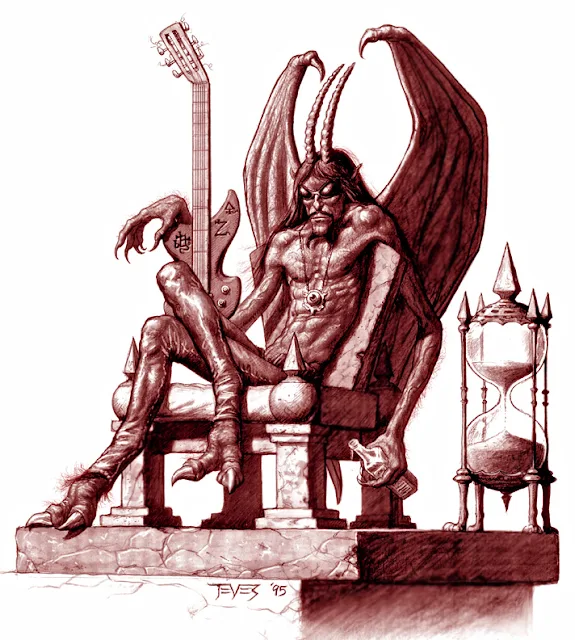
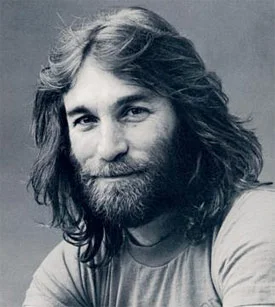


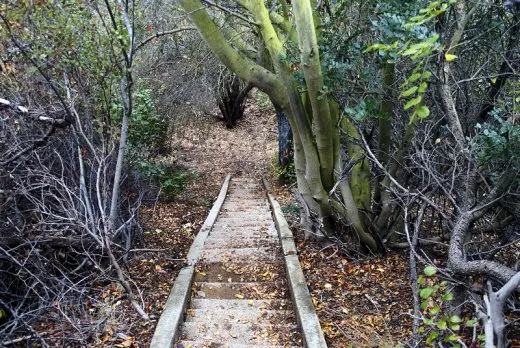









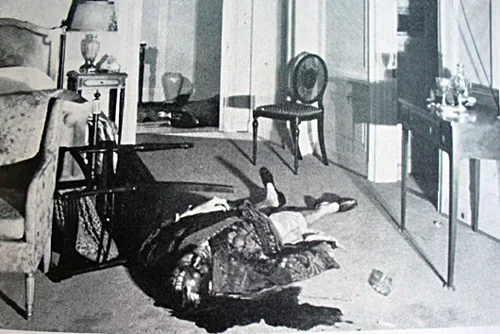


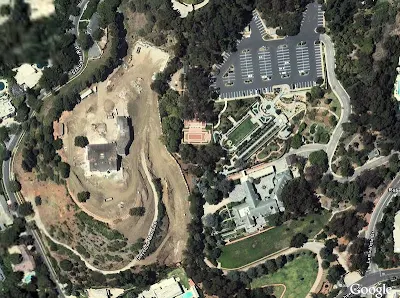


No comments:
Post a Comment
If your comment is not posted, it was deemed offensive.